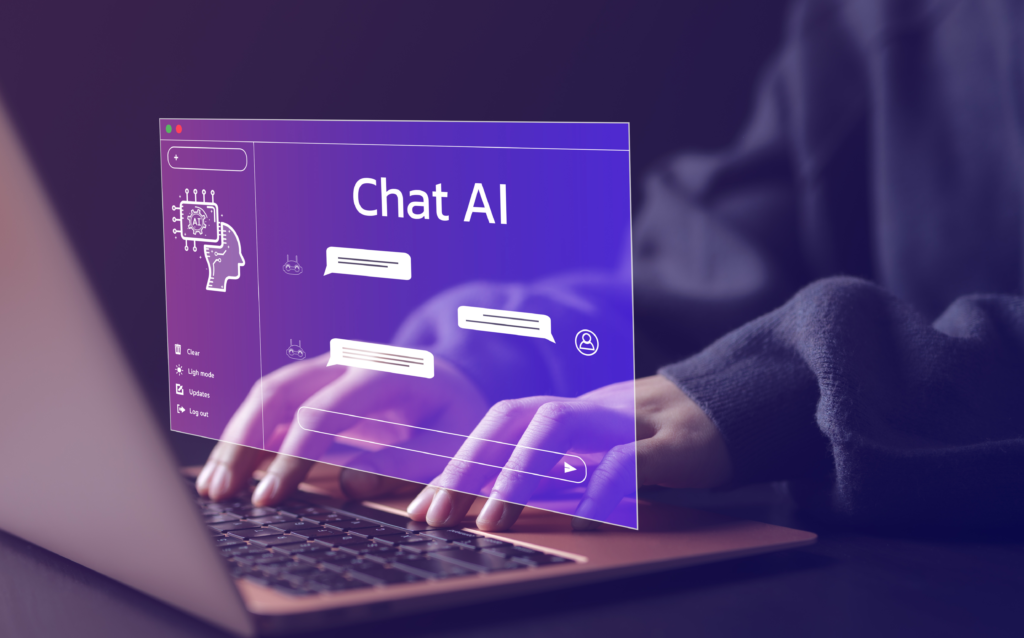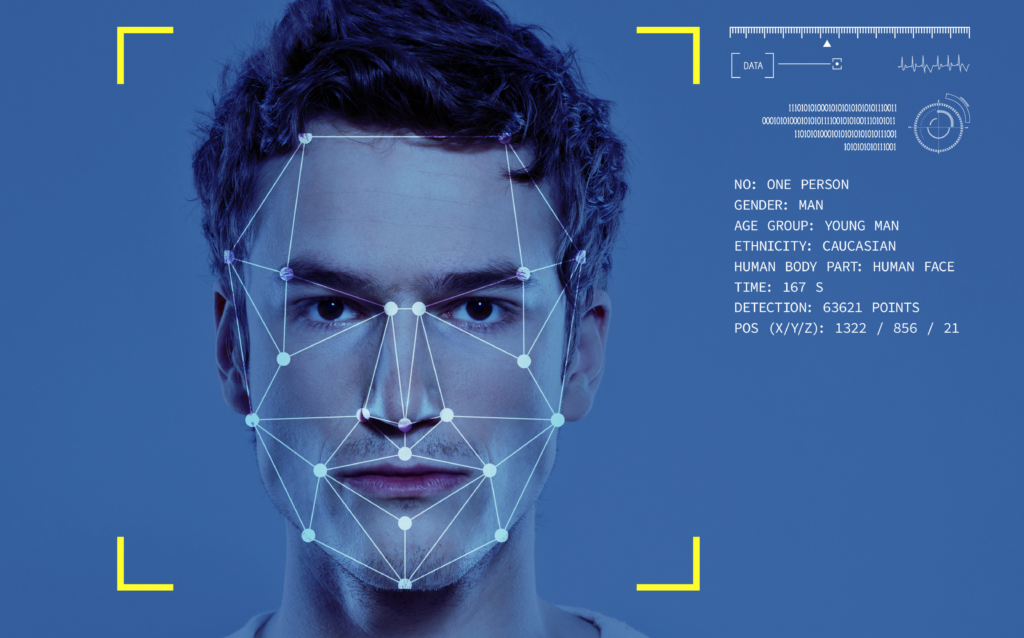In the realm of digital marketing, the rise of artificial intelligence (AI) has been nothing short of revolutionary. From personalized content creation to predictive analytics, AI is reshaping the way businesses engage with their audiences and optimize their marketing efforts. In this comprehensive guide, we’ll explore the myriad ways in which AI is transforming digital marketing strategies, offering insights, examples, and actionable tips for businesses looking to leverage the power of AI to stay ahead in today’s competitive landscape.
Chapter 1: Understanding AI in Digital Marketing
Defining Artificial Intelligence
Artificial Intelligence (AI) is a branch of computer science that aims to create intelligent machines capable of performing tasks that typically require human intelligence. In the context of digital marketing, AI refers to the use of algorithms and advanced technologies to automate and optimize various marketing processes.
Machine Learning: Machine learning is a subset of AI that focuses on enabling machines to learn from data and improve their performance over time without being explicitly programmed. In digital marketing, machine learning algorithms analyze vast amounts of data to identify patterns, trends, and insights that can inform marketing strategies.
Natural Language Processing (NLP): NLP is another crucial aspect of AI that enables computers to understand, interpret, and generate human language. In digital marketing, NLP powers chatbots, sentiment analysis tools, and content generation platforms, allowing businesses to engage with customers more effectively and create relevant content.
Neural Networks: Neural networks are AI models inspired by the structure and function of the human brain. These networks consist of interconnected nodes (or neurons) that process information and make decisions. In digital marketing, neural networks are used for tasks such as image recognition, predictive analytics, and personalized content recommendations.
The Evolution of AI in Marketing
The evolution of AI in marketing can be traced back to the early days of basic automation, where simple rule-based systems were used to streamline repetitive tasks such as email marketing and ad targeting. Over time, advancements in AI technologies, coupled with the exponential growth of data, have led to the development of more sophisticated marketing applications.
Basic Automation: In the early stages, AI was primarily used for basic automation tasks, such as scheduling social media posts, email marketing campaigns, and ad placements. While these systems provided some efficiency gains, they lacked the ability to analyze data and adapt to changing customer preferences.
Predictive Analytics: As AI technologies advanced, predictive analytics emerged as a powerful tool for marketers. By analyzing historical data and identifying patterns, predictive analytics algorithms can forecast future trends, customer behavior, and campaign performance. This enables marketers to make data-driven decisions and optimize their strategies for better results.
Personalization: One of the most significant developments in AI-driven marketing is the rise of personalization. AI algorithms analyze customer data, including browsing history, purchase behavior, and demographics, to deliver personalized experiences across various touchpoints. From tailored product recommendations to customized email campaigns, personalization enhances customer engagement and loyalty.
Types of AI in Digital Marketing
In modern digital marketing, AI is applied across various domains to improve efficiency, effectiveness, and customer experience.
Recommendation Engines: Recommendation engines leverage AI algorithms to analyze user data and provide personalized recommendations for products, content, and services. These systems enhance user engagement and drive conversions by delivering relevant suggestions based on individual preferences and behavior.
Predictive Analytics Tools: Predictive analytics tools use AI and machine learning to analyze data and forecast future outcomes. Marketers can use these insights to anticipate trends, identify opportunities, and optimize their strategies for better results.
Chatbots: AI-powered chatbots are virtual assistants that interact with users in natural language to answer questions, provide assistance, and facilitate transactions. Chatbots enhance customer support, streamline sales processes, and improve overall user experience by delivering instant, personalized responses 24/7.
Image Recognition Systems: Image recognition systems use AI algorithms to analyze and interpret visual content, such as images and videos. In digital marketing, these systems enable tasks such as visual search, content moderation, and ad targeting based on image context and attributes.
Chapter 2: Personalized Content Creation
In the ever-evolving digital landscape, content has emerged as a cornerstone of effective marketing strategies. However, in a world inundated with information, generic content no longer suffices to capture and retain audience attention. Personalized content creation, empowered by artificial intelligence (AI), has become instrumental in delivering tailored experiences that resonate with individual users. This chapter explores the intricacies of personalized content creation in the realm of digital marketing, delving into its significance, mechanisms, and applications.
The Power of Personalization
Personalization is the art of tailoring content and experiences to individual preferences, behaviors, and characteristics. In digital marketing, personalized content has proven to be highly effective in engaging audiences, fostering brand loyalty, and driving conversions. By acknowledging and addressing the unique needs and interests of each customer, businesses can create deeper connections and enhance the overall user experience.
Benefits of Personalization: Personalized content fosters a sense of relevance and resonance, increasing user engagement, time spent on site, and ultimately, conversion rates. Moreover, it enables businesses to gather valuable insights into customer preferences and behaviors, facilitating more targeted and effective marketing strategies.
Challenges of Personalization: While the benefits of personalization are evident, implementing it effectively can pose challenges. Businesses must navigate issues such as data privacy, consent management, and the need for sophisticated AI algorithms to analyze vast amounts of user data and deliver personalized experiences at scale.
Content Recommendations
AI-powered recommendation engines are pivotal in delivering personalized content experiences across digital platforms. These algorithms analyze user data, such as browsing history, purchase behavior, and demographic information, to generate tailored recommendations for products, services, or content. Whether it’s suggesting relevant articles on a news website, recommending products on an e-commerce platform, or curating playlists on a streaming service, recommendation engines enhance user engagement and satisfaction by surfacing content aligned with individual preferences.
Examples of Content Recommendations: Amazon’s recommendation engine analyzes users’ purchase history, browsing behavior, and demographic data to suggest products that align with their interests and preferences. Similarly, streaming platforms like Netflix leverage AI algorithms to recommend movies and TV shows based on users’ viewing history, ratings, and genre preferences, enhancing the overall viewing experience.
Dynamic Content Generation
AI-driven content generation platforms leverage natural language processing (NLP) and machine learning algorithms to automatically create personalized content tailored to individual users or specific contexts. These platforms can generate a variety of content types, including product descriptions, email subject lines, blog posts, and social media captions, based on predefined templates and user data inputs.
Advantages of Dynamic Content Generation: Dynamic content generation enables businesses to create and deliver personalized content at scale, saving time and resources while maintaining consistency and relevance. Moreover, it allows for real-time customization and adaptation of content based on user interactions and feedback, maximizing engagement and conversion opportunities.
Applications of Dynamic Content Generation: Dynamic content generation finds applications across various marketing channels, including email marketing, website personalization, and advertising. For instance, email marketing platforms use dynamic content to customize email campaigns based on recipient preferences, demographics, and past interactions, resulting in higher open rates, click-through rates, and conversions.
Chapter 3: Predictive Analytics
In the dynamic landscape of digital marketing, the ability to anticipate trends, understand customer behavior, and make data-driven decisions is paramount. Predictive analytics, powered by artificial intelligence (AI) and advanced data analysis techniques, empowers marketers to unlock valuable insights from vast datasets and forecast future outcomes with remarkable accuracy. This chapter delves into the realm of predictive analytics in digital marketing, exploring its significance, methodologies, and practical applications.
Harnessing the Power of Data
Data serves as the lifeblood of predictive analytics, providing the raw material from which actionable insights are derived. Marketers leverage various sources of data, including customer interactions, website traffic, social media engagement, and sales transactions, to gain a comprehensive understanding of audience behavior and preferences. By harnessing the power of data, businesses can uncover patterns, trends, and correlations that inform strategic decision-making and drive marketing success.
Data Collection and Integration: Effective predictive analytics begins with robust data collection practices, ensuring the availability of high-quality, relevant data for analysis. Marketers employ a range of tools and technologies to collect data from disparate sources, including customer relationship management (CRM) systems, web analytics platforms, and third-party data providers. Data integration is essential to consolidate and harmonize data from multiple sources, enabling comprehensive analysis and insights generation.
Data Preprocessing and Cleaning: Prior to analysis, raw data undergoes preprocessing and cleaning to remove inconsistencies, errors, and outliers that may skew results. This step involves techniques such as data normalization, missing value imputation, and outlier detection to ensure data integrity and accuracy. Clean, standardized data sets are then ready for analysis using predictive modeling techniques.
Predictive Modeling Techniques
Predictive analytics encompasses a diverse array of modeling techniques, each suited to different types of data and predictive tasks. Common predictive modeling techniques include:
Regression Analysis: Regression analysis is a statistical method used to model the relationship between a dependent variable and one or more independent variables. In digital marketing, regression analysis can be employed to predict outcomes such as sales, website traffic, or customer lifetime value based on factors such as advertising spend, demographics, and campaign performance metrics.
Classification Algorithms: Classification algorithms are used to categorize data into distinct classes or groups based on predefined criteria. In marketing, classification algorithms can be applied to tasks such as customer segmentation, lead scoring, and churn prediction. Popular classification algorithms include decision trees, logistic regression, and support vector machines.
Time Series Forecasting: Time series forecasting is a specialized predictive modeling technique used to predict future values of a variable based on past observations. In digital marketing, time series forecasting can be applied to predict website traffic, sales, or social media engagement over time. Techniques such as autoregressive integrated moving average (ARIMA) and exponential smoothing are commonly used for time series forecasting.
Applications of Predictive Analytics in Digital Marketing
Predictive analytics finds diverse applications across the spectrum of digital marketing, enabling marketers to optimize campaigns, personalize experiences, and maximize return on investment (ROI). Key applications include:
Customer Lifetime Value Prediction: Predictive analytics can be used to estimate the future value of individual customers over their lifetime with a business. By identifying high-value customers and tailoring marketing strategies accordingly, businesses can prioritize resources and optimize customer acquisition and retention efforts.
Predictive Lead Scoring: Lead scoring is the process of assigning a numerical value to leads based on their likelihood to convert into customers. Predictive analytics enhances lead scoring by leveraging historical data and behavioral indicators to identify leads with the highest propensity to convert, enabling sales teams to focus on the most promising opportunities.
Dynamic Pricing Optimization: Predictive analytics can inform dynamic pricing strategies by analyzing market trends, competitor pricing, and customer behavior to determine optimal pricing strategies in real time. Dynamic pricing optimization enables businesses to maximize revenue and profitability while remaining competitive in dynamic market environments.
Chapter 4: Chatbots and Virtual Assistants
In today’s digital age, customer expectations for instant support and seamless interactions have never been higher. Chatbots and virtual assistants, powered by artificial intelligence (AI) and natural language processing (NLP) technologies, have emerged as indispensable tools for delivering personalized, efficient, and round-the-clock customer service. This chapter delves into the realm of chatbots and virtual assistants in digital marketing, exploring their functionalities, benefits, and practical applications.
Enhancing Customer Support
The cornerstone of chatbots and virtual assistants lies in their ability to provide instantaneous support and assistance to customers across various touchpoints. Whether it’s answering common inquiries, resolving technical issues, or facilitating transactions, chatbots and virtual assistants serve as the first line of contact for customers seeking assistance.
24/7 Availability: Unlike human agents, chatbots and virtual assistants are available round-the-clock, providing customers with instant support and assistance at any time of the day or night. This ensures that customers receive timely responses to their queries and can complete transactions without delay, enhancing overall satisfaction and loyalty.
Scalability and Consistency: Chatbots and virtual assistants can handle a high volume of inquiries simultaneously, making them ideal for businesses with large customer bases or fluctuating support demands. Moreover, they deliver consistent responses and experiences, eliminating variations in service quality and ensuring uniformity across interactions.
Conversational Marketing
Beyond basic customer support, chatbots and virtual assistants play a pivotal role in conversational marketing – the practice of engaging customers in personalized, two-way conversations to drive engagement, conversions, and brand loyalty.
Lead Generation: Chatbots can initiate conversations with website visitors, guiding them through the sales funnel and capturing lead information through interactive dialogue and personalized recommendations. By proactively engaging prospects and addressing their needs in real time, chatbots increase the likelihood of conversion and accelerate sales cycles.
Customer Engagement: Virtual assistants can engage customers in personalized conversations across various channels, including websites, messaging apps, and social media platforms. Through natural language interactions and tailored responses, virtual assistants foster meaningful connections with customers, driving engagement, and loyalty.
Chatbot Best Practices
While chatbots and virtual assistants offer numerous benefits, implementing them effectively requires careful planning, design, and optimization. Key best practices include:
Understanding User Intent: To deliver relevant and helpful responses, chatbots must accurately understand user intent and context. Natural language understanding (NLU) algorithms enable chatbots to interpret user queries, extract key information, and provide appropriate responses based on predefined rules or machine learning models.
Seamless Integration: Chatbots should seamlessly integrate with existing systems and platforms, such as customer relationship management (CRM) software, e-commerce platforms, and messaging apps. Integration enables chatbots to access relevant customer data, streamline processes, and deliver personalized experiences tailored to individual preferences and purchase history.
Chatbot Analytics and Optimization
Measuring the effectiveness of chatbots and virtual assistants is essential for continuous improvement and optimization. Chatbot analytics tools provide insights into user interactions, conversation flows, and performance metrics, allowing businesses to identify areas for improvement and refine their chatbot strategies over time.
Key Performance Indicators (KPIs): Common KPIs for chatbots include response time, resolution rate, user satisfaction, and conversion rate. By tracking these metrics, businesses can assess the effectiveness of their chatbots in delivering positive user experiences and achieving desired outcomes.
Iterative Improvement: Based on analytics data and user feedback, businesses can iteratively improve their chatbots by refining conversation flows, updating knowledge bases, and adding new features or functionalities. Continuous optimization ensures that chatbots remain responsive, relevant, and valuable to users over time.
Chapter 5: Image and Video Recognition
In an increasingly visual-centric digital landscape, the ability to analyze and interpret images and videos has become essential for marketers seeking to understand consumer behavior, personalize experiences, and drive engagement. Image and video recognition, powered by artificial intelligence (AI) algorithms, enables businesses to extract valuable insights from visual content, facilitate content moderation, and enhance advertising effectiveness. This chapter explores the realm of image and video recognition in digital marketing, delving into its applications, technologies, and practical implications.
Visual Content Analysis
Visual content analysis involves the use of AI algorithms to analyze and extract meaningful information from images and videos. From identifying objects and scenes to recognizing text and faces, visual content analysis enables marketers to gain valuable insights into consumer preferences, trends, and sentiments.
Object Detection and Recognition: AI algorithms can detect and identify objects within images and videos, enabling marketers to categorize and analyze visual content based on specific attributes or characteristics. For example, e-commerce businesses can use object detection to identify products in images and automatically tag them with relevant metadata, such as product category, color, and style.
Scene Understanding: Scene understanding algorithms analyze the context and composition of images and videos, enabling marketers to identify visual themes, trends, and patterns. By understanding the context in which visual content is presented, marketers can tailor their messaging and creative assets to resonate with target audiences more effectively.
Visual Search
Visual search technology allows users to search for products, information, or content using images rather than text. By leveraging AI algorithms for image recognition and similarity matching, visual search enables users to discover relevant products, services, and content based on visual cues and preferences.
Product Discovery: Visual search enhances the product discovery experience by enabling users to find similar products or visually related items based on an image query. For example, users can take a photo of a product they like and use visual search to find similar products available for purchase from online retailers.
Content Discovery: In addition to e-commerce applications, visual search can also be applied to content discovery scenarios, such as identifying landmarks, artwork, or objects of interest within images. By integrating visual search functionality into content platforms, marketers can enhance user engagement and exploration, driving traffic and retention.
Content Moderation
Content moderation involves the automatic analysis and filtering of user-generated content (UGC) to ensure compliance with community guidelines, brand standards, and legal requirements. AI-powered image and video recognition algorithms enable businesses to identify and flag inappropriate or harmful content, protecting brand reputation and user safety.
Automated Moderation: AI algorithms analyze images and videos uploaded by users to identify potentially sensitive or objectionable content, such as nudity, violence, or hate speech. Automated moderation systems can flag problematic content for review by human moderators or remove it automatically, depending on predefined rules and thresholds.
Brand Safety: Image and video recognition technologies enable businesses to monitor and enforce brand safety standards across digital platforms. By detecting brand logos, trademarks, and intellectual property in visual content, marketers can ensure that their brand assets are used appropriately and protect against unauthorized usage or infringement.
Chapter 6: AI in Advertising
Advertising is at the heart of digital marketing, serving as a powerful tool for businesses to reach and engage their target audiences. With the advent of artificial intelligence (AI), advertising has undergone a significant transformation, enabling marketers to optimize ad campaigns, target audiences more effectively, and deliver personalized experiences at scale. This chapter explores the myriad applications of AI in advertising, from programmatic ad buying to ad creative optimization, and its profound implications for the future of digital advertising.
Programmatic Advertising
Programmatic advertising refers to the automated buying and selling of digital advertising inventory through real-time bidding (RTB) platforms and algorithms. Powered by AI and machine learning technologies, programmatic advertising enables marketers to target specific audiences, optimize ad placements, and maximize campaign performance with unprecedented efficiency and precision.
Real-Time Bidding (RTB): RTB platforms use AI algorithms to analyze user data, predict ad performance, and bid on ad impressions in real time. By evaluating factors such as user demographics, browsing behavior, and contextual relevance, RTB algorithms ensure that ads are delivered to the most relevant audiences at the right time and place, maximizing ad effectiveness and ROI.
Audience Targeting and Segmentation: AI-driven audience targeting capabilities enable marketers to segment audiences based on demographics, interests, behaviors, and intent signals. By leveraging data-driven insights and predictive analytics, marketers can identify high-value audience segments and tailor ad content and messaging to resonate with specific audience segments, driving engagement and conversions.
Ad Creative Optimization
The effectiveness of digital advertising hinges not only on targeting the right audience but also on delivering compelling ad creatives that capture audience attention and drive action. AI-powered ad creative optimization tools leverage machine learning algorithms to automatically test, iterate, and optimize ad creative elements such as headlines, images, and calls-to-action for maximum impact and relevance.
Multivariate Testing: AI algorithms conduct multivariate testing experiments to systematically evaluate different ad creative variations and combinations. By analyzing performance metrics such as click-through rates (CTR), conversion rates, and engagement metrics, these algorithms identify the most effective creative elements and refine ad content accordingly, improving campaign performance over time.
Dynamic Creative Optimization (DCO): DCO platforms use AI to personalize ad creatives in real time based on individual user attributes, preferences, and contextual signals. By dynamically adjusting ad content elements such as product recommendations, pricing, and messaging, DCO enables marketers to deliver highly relevant and personalized ad experiences tailored to each user, increasing engagement and conversion rates.
Predictive Ad Placement
AI-driven predictive ad placement technologies enable marketers to identify the most effective advertising channels, placements, and timing to reach target audiences and achieve campaign objectives. By analyzing historical campaign data, audience behavior, and market trends, predictive ad placement algorithms optimize ad delivery strategies to maximize reach, engagement, and conversion opportunities.
Channel Selection: Predictive ad placement algorithms assess the performance and effectiveness of different advertising channels, such as search, social media, display, and video, to determine the optimal channel mix for a given campaign. By allocating budget and resources to the most promising channels, marketers can maximize campaign reach and ROI.
Ad Scheduling and Frequency Capping: AI algorithms analyze audience engagement patterns and historical campaign performance data to optimize ad scheduling and frequency capping strategies. By delivering ads at the times when audiences are most active and limiting ad exposure to avoid audience fatigue, predictive ad placement algorithms ensure that ads are seen by the right people at the right time, maximizing ad effectiveness and minimizing wasted impressions.
Chapter 7: SEO and Content Optimization
In the digital marketing landscape, search engine optimization (SEO) remains a cornerstone for driving organic traffic to websites and increasing visibility in search engine results pages (SERPs). With the integration of artificial intelligence (AI) technologies, SEO has evolved beyond keyword optimization and meta tags to encompass more sophisticated content optimization strategies. This chapter explores the intersection of AI and SEO, highlighting how businesses can leverage AI-driven tools and techniques to enhance their organic search performance and content effectiveness.
SEO Automation
AI-powered SEO automation tools enable marketers to streamline and optimize various aspects of their SEO strategies, from keyword research to content optimization and performance tracking. By leveraging machine learning algorithms and natural language processing (NLP) techniques, these tools automate repetitive tasks, uncover valuable insights, and drive actionable recommendations for improving organic search visibility.
Keyword Research: AI-driven keyword research tools analyze search query data, user intent signals, and competitive landscape to identify high-value keywords and topics with the potential to drive organic traffic and conversions. By leveraging predictive analytics and semantic analysis, these tools provide marketers with actionable insights into emerging search trends and content opportunities.
Content Optimization: AI-powered content optimization tools use NLP algorithms to analyze the relevance, quality, and structure of website content and provide recommendations for improving search visibility and user engagement. From optimizing on-page elements such as titles, headings, and meta descriptions to identifying opportunities for internal linking and semantic enrichment, these tools help marketers create content that resonates with both search engines and human audiences.
Content Quality Assessment
Content quality assessment is essential for ensuring that website content meets the needs and expectations of both users and search engines. AI-driven content quality assessment tools leverage machine learning algorithms to evaluate factors such as readability, relevance, and uniqueness, and provide actionable recommendations for enhancing content effectiveness and performance.
Readability Analysis: AI algorithms assess the readability of website content by analyzing factors such as sentence length, word complexity, and overall readability scores. By providing readability insights and suggestions for simplifying language and improving comprehension, these tools help marketers create content that is accessible and engaging to a wide audience.
Relevance Analysis: AI-powered relevance analysis tools evaluate the topical relevance of website content by comparing it to relevant search queries, user intent signals, and competitor content. By identifying gaps and opportunities for aligning content with target keywords and topics, these tools help marketers create content that is optimized for search intent and contextually relevant to user queries.
Voice Search Optimization
The rise of voice search technologies has reshaped the SEO landscape, requiring marketers to adapt their strategies to accommodate the unique characteristics of voice-driven queries and responses. AI-driven voice search optimization tools leverage natural language understanding (NLU) algorithms to analyze conversational queries, extract semantic intent, and optimize content for voice search compatibility.
Conversational Keyword Research: AI algorithms analyze voice search query data to identify conversational keywords and phrases that reflect natural language patterns and user intent. By incorporating conversational keywords into website content and metadata, marketers can optimize their content for voice search queries and increase visibility in voice search results.
Featured Snippets Optimization: AI-powered featured snippets optimization tools analyze search query data and content performance metrics to identify opportunities for appearing in featured snippets, answer boxes, and voice search results. By optimizing content structure, formatting, and markup to provide concise, authoritative answers to common questions and queries, marketers can increase the likelihood of earning featured snippet placements and capturing voice search traffic.
Chapter 8: Social Media Marketing
Social media has become an integral part of the digital marketing landscape, offering businesses unparalleled opportunities to connect with their target audiences, build brand awareness, and drive engagement. With the advent of artificial intelligence (AI), social media marketing has evolved beyond basic content scheduling and community management to encompass more sophisticated strategies for audience targeting, content personalization, and performance optimization. This chapter delves into the intersection of AI and social media marketing, highlighting how businesses can leverage AI-driven tools and techniques to enhance their social media presence and achieve their marketing objectives effectively.
Social Listening and Sentiment Analysis
Social listening involves monitoring and analyzing online conversations and mentions of a brand, product, or topic across social media platforms. AI-powered social listening tools leverage natural language processing (NLP) algorithms to analyze text data from social media posts, comments, and conversations, enabling businesses to gain valuable insights into audience sentiment, preferences, and trends.
Sentiment Analysis: Sentiment analysis algorithms classify social media mentions and comments as positive, negative, or neutral based on the tone and language used in the text. By analyzing sentiment trends over time and across different demographics, businesses can identify emerging issues, gauge brand sentiment, and proactively address customer concerns or feedback.
Brand Reputation Management: AI-driven social listening tools enable businesses to monitor brand mentions, sentiment, and conversations in real-time, allowing them to respond promptly to customer inquiries, complaints, or crises. By actively engaging with customers and addressing their concerns on social media, businesses can build trust, mitigate negative sentiment, and protect brand reputation.
Influencer Identification
Influencer marketing has emerged as a powerful strategy for brands to leverage the social influence and credibility of individuals with large followings on social media platforms. AI-powered influencer identification tools analyze social media data, audience demographics, and engagement metrics to identify potential influencers who align with a brand’s target audience and objectives.
Audience Segmentation: AI algorithms segment social media audiences based on demographics, interests, and engagement behaviors, allowing marketers to identify influencers who have a strong following among specific audience segments. By partnering with influencers who resonate with their target audience, businesses can amplify their brand message and reach new potential customers effectively.
Influencer Relationship Management: AI-driven influencer relationship management platforms facilitate collaboration between brands and influencers by streamlining communication, campaign management, and performance tracking. By providing analytics and insights into influencer performance, audience engagement, and campaign ROI, these platforms enable brands to optimize their influencer marketing strategies and maximize the impact of their campaigns.
Social Ad Targeting
Social media advertising offers businesses precise targeting capabilities to reach specific audiences based on demographics, interests, behaviors, and engagement signals. AI-powered social ad targeting algorithms analyze user data and behavioral patterns to optimize ad delivery, increase relevance, and drive conversions across social media platforms.
Lookalike Audience Targeting: AI algorithms identify patterns and similarities among existing customers or website visitors to create lookalike audiences with similar characteristics and behaviors. By targeting lookalike audiences with social media ads, businesses can expand their reach and target new potential customers who share similar traits and interests as their existing customer base.
Dynamic Ad Personalization: AI-driven dynamic ad personalization tools customize ad content, messaging, and creative elements based on user attributes, preferences, and past interactions. By delivering personalized ad experiences tailored to individual users, businesses can increase ad relevance, engagement, and conversion rates on social media platforms.
Chapter 9: Customer Relationship Management (CRM)
Customer Relationship Management (CRM) is a fundamental aspect of digital marketing, focusing on building and nurturing relationships with customers throughout their journey. With the integration of artificial intelligence (AI), CRM has evolved into a dynamic and personalized approach to managing customer interactions, leveraging data-driven insights to enhance customer satisfaction, retention, and loyalty. This chapter explores the intersection of AI and CRM, highlighting how businesses can leverage AI-driven tools and techniques to optimize their CRM strategies and deliver exceptional customer experiences.
AI-Powered Customer Insights
AI-driven CRM platforms analyze vast amounts of customer data, including demographic information, purchase history, browsing behavior, and interactions across various touchpoints, to generate actionable insights and recommendations for improving customer engagement and satisfaction.
Customer Segmentation: AI algorithms segment customers into distinct groups based on common characteristics, behaviors, and preferences, allowing businesses to tailor their marketing messages, offers, and communications to each segment’s specific needs and interests.
Predictive Analytics: Predictive analytics algorithms forecast future customer behavior, such as purchase intent, churn likelihood, and lifetime value, enabling businesses to proactively identify and address opportunities and risks before they arise.
Personalized Communication
AI-powered CRM platforms enable businesses to deliver personalized communication and experiences to customers across multiple channels, including email, social media, and messaging platforms, based on their preferences, behaviors, and interactions.
Dynamic Content Personalization: AI algorithms dynamically personalize email content, subject lines, and offers based on individual customer attributes, past interactions, and predicted preferences, increasing engagement and conversion rates.
Chatbots and Virtual Assistants: AI-driven chatbots and virtual assistants interact with customers in real-time, providing personalized assistance, answering questions, and resolving issues, enhancing the overall customer experience and satisfaction.
Predictive Lead Scoring
AI-powered lead scoring models analyze lead data, including demographic information, firmographics, engagement metrics, and behavioral signals, to prioritize leads based on their likelihood to convert into customers.
Scoring Models: AI algorithms assign scores to leads based on their fit (e.g., demographics, firmographics) and behavior (e.g., engagement, interaction history), enabling sales teams to focus their efforts on leads with the highest potential value and likelihood to convert.
Automation and Integration: AI-driven lead scoring models integrate seamlessly with CRM systems and marketing automation platforms, automating lead qualification and routing processes and enabling timely follow-up and nurturing.
Predictive Customer Service
AI-powered CRM platforms enable businesses to predict and anticipate customer service needs, proactively resolving issues and addressing concerns before they escalate.
Sentiment Analysis: AI algorithms analyze customer feedback, sentiment, and interactions across various channels, such as social media, email, and support tickets, to identify patterns and trends and predict potential issues or opportunities.
Predictive Recommendations: AI-driven CRM platforms provide predictive recommendations for customer service agents, suggesting relevant solutions, offers, or responses based on historical data, context, and customer preferences, improving response times and resolution rates.
Chapter 10: AI in Email Marketing
Email marketing remains one of the most effective channels for reaching and engaging customers in the digital age. With the integration of artificial intelligence (AI), email marketing has evolved beyond traditional batch-and-blast campaigns to encompass more sophisticated strategies for audience segmentation, personalization, and automation. This chapter explores the intersection of AI and email marketing, highlighting how businesses can leverage AI-driven tools and techniques to optimize their email marketing campaigns and deliver relevant, timely, and engaging content to their subscribers.
AI-Powered Audience Segmentation
AI-driven email marketing platforms analyze subscriber data, including demographics, behaviors, and engagement metrics, to segment audiences into distinct groups based on common characteristics and preferences.
Behavioral Segmentation: AI algorithms track subscriber interactions with email campaigns, websites, and other touchpoints to identify patterns and behaviors, allowing marketers to segment audiences based on their interests, engagement levels, and purchase intent.
Predictive Segmentation: Predictive analytics algorithms forecast future subscriber behavior, such as likelihood to open, click, or convert, enabling marketers to target and prioritize segments with the highest potential value and engagement.
Personalized Email Content
AI-powered email marketing platforms enable businesses to deliver personalized content and recommendations to subscribers based on their preferences, behaviors, and interactions.
Dynamic Content Insertion: AI algorithms dynamically insert personalized content, product recommendations, and offers into email campaigns based on individual subscriber attributes, past purchase history, and browsing behavior, increasing relevance and engagement.
Predictive Personalization: Predictive analytics algorithms anticipate subscriber preferences and interests, enabling marketers to tailor email content, subject lines, and calls-to-action to resonate with each recipient’s unique needs and preferences.
Automated Email Campaigns
AI-driven email marketing platforms automate various aspects of email campaign management, from content creation and scheduling to segmentation and optimization, enabling marketers to save time and resources while maximizing campaign effectiveness.
Automated Workflows: AI-powered workflow automation tools enable marketers to create sophisticated email automation sequences based on subscriber behaviors, triggers, and goals, delivering timely and relevant messages throughout the customer journey.
Optimization and Testing: AI algorithms continuously optimize email campaigns by analyzing performance data, testing different subject lines, content variations, and send times, and identifying opportunities for improvement and refinement.
Predictive Email Analytics
AI-driven email marketing platforms provide predictive analytics and insights to help marketers measure and optimize campaign performance, forecast future outcomes, and identify actionable opportunities for improvement.
Predictive Analytics: Predictive modeling algorithms forecast key email marketing metrics, such as open rates, click-through rates, and conversion rates, enabling marketers to anticipate campaign performance and adjust strategies accordingly.
Actionable Insights: AI-powered email analytics tools generate actionable insights and recommendations for optimizing campaign performance, identifying trends, and uncovering opportunities for segmentation, personalization, and content optimization.
Conclusion
As AI continues to evolve and permeate every aspect of digital marketing, businesses must adapt and embrace this transformative technology to remain competitive in an increasingly data-driven and customer-centric environment. By understanding the capabilities and potential of AI in personalized content creation, predictive analytics, chatbots, image and video recognition, advertising, SEO, social media marketing, and beyond, businesses can unlock new opportunities for growth, innovation, and success in the digital age.
Frequently Asked Questions (FAQs) About AI in Digital Marketing
- What is artificial intelligence (AI) in digital marketing?Artificial intelligence in digital marketing refers to the use of AI technologies, such as machine learning and natural language processing, to automate tasks, analyze data, and optimize marketing strategies for better performance and results.
- How is AI used in content creation?AI is used in content creation to generate personalized content, identify relevant topics, and predict trends based on user behavior and preferences. AI-powered tools can automate the writing process, create compelling headlines, and tailor content to specific audience segments.
- What are the benefits of using AI in advertising?The benefits of using AI in advertising include improved ad targeting and personalization, increased efficiency and ROI, and enhanced campaign performance through predictive analytics and optimization. AI helps advertisers reach the right audience with the right message at the right time, maximizing engagement and conversions.
- How does AI enhance customer support through chatbots?AI enhances customer support through chatbots by providing instant responses to customer inquiries, 24/7 availability, and personalized assistance based on user interactions and preferences. Chatbots can handle repetitive tasks, resolve common issues, and escalate complex queries to human agents when necessary, improving overall customer satisfaction and efficiency.
- What role does AI play in social media marketing?AI plays a crucial role in social media marketing by enabling audience segmentation, influencer identification, ad targeting, and content personalization. AI-powered tools analyze user data, predict behavior, and optimize campaigns to maximize reach, engagement, and ROI on social media platforms.
- How can AI improve email marketing efforts?AI can improve email marketing efforts by personalizing email content, automating campaign workflows, and optimizing performance through predictive analytics. AI-driven tools segment audiences, tailor content based on individual preferences, and predict the best times to send emails for maximum impact and engagement.
- What are the key challenges of implementing AI in digital marketing?Some key challenges of implementing AI in digital marketing include data privacy concerns, algorithm bias, and the need for specialized skills and resources to leverage AI effectively. Additionally, integrating AI into existing marketing systems and processes may require time and investment to ensure seamless implementation and adoption.
- How can businesses get started with AI in digital marketing?Businesses can get started with AI in digital marketing by identifying specific use cases and objectives, evaluating AI-powered tools and platforms, and investing in training and resources to build internal expertise. It’s essential to start small, experiment with AI-driven solutions, and measure results to understand the impact on marketing performance and ROI.
















